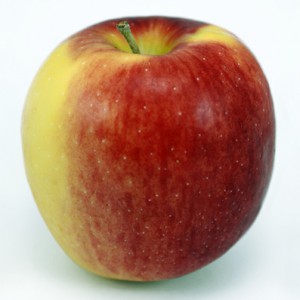Tuesday evening I was browsing the latest edition of the LCBO’s ‘Vintages Release Catalogue’. This catalogue provides descriptions and sometimes wine critics’ quality scores for the new wine products about to be released through Vintages stores in Ontario. As I browsed, two thoughts came to mind.
Firstly, I noticed that most of the scores in this catalogue were between 88 and 92 on a 100-point scale. It struck me that this suggested the majority of the wines in this catalogue were of very similarly high quality, with almost all wines rated within a narrow 5-percentage point range. I found that odd, perhaps unrealistic, and decided to think about it. Secondly, I noticed that the wine descriptions were making me thirsty.
Seeing the wisdom in choosing the beverage that best suited the task at hand, I poured myself a glass of red to compliment my thinking, sat down with the catalogue and made a few calculations and notes. Here are some highlights.
- Vintages published scores for 57 of the 120 wines in this catalogue. The wine critics quoted used the 100-point scale for 48 of the 57 rated wines. The other nine were based on 20, 5 or 3-point scales.
- Of the 48 using the 100-point scale, 41 (85.4%) received a score between 88 and 92, and 30 of those were either 90 or 91, which confirmed my first observation. The other 7 wines were rated higher than 92, leaving no scores below 88.
Taking a sip from my glass, I contemplated why so many wines received such similar scores, and how all this relates to marketing measurement. Here are a few thoughts:
Wine Scoring: The LCBO is in the business of selling wine and I suspect they have a policy of only publishing scores of 88 or higher. I tested this theory by looking at the two previous Release Catalogues and wasn’t able to find a wine scoring 87 or lower. Perhaps they’ve learned that lower scores reduce sales and so don’t publish scores below 88.
Marketing Measurement: Marketers are in the business of spending money effectively to drive positive business outcomes. Instead of measuring only the best marketing programs or those you might want to cast in a favourable light, measure and rank all programs so you can identify which are most and least effective, and then optimize future strategies accordingly.
Wine Scoring: By my rough count, the 48 scores using the 100-point scale were sourced from 26 different wine critics. While each used a 100-point scale, I have a hard time believing all 26 used the scale in exactly the same way. I also suspect that some critics are more generous with their scores than others, like my calculus teacher in CEGEP. The other important issue is that scoring wine is a highly subjective exercise. It isn’t at all uncommon for two or more tasters to disagree on a wine’s quality and the corresponding score. Experts have different opinions on subjective matters.
Marketing Measurement: To minimize inconsistencies, reduce or eliminate subjectivity and personal bias from your measurement processes. Having 26 experts using similar but sometimes different methods of scoring your marketing programs based on their personal opinions would not be a recipe for consistency. One person needs to lead your measurement efforts using one methodology that your organization understands and supports.
Wine Scoring: I did a little reading on wine scoring and discovered that wine critics can be inconsistent in the scores they award to the exact same wine on different occasions. For example, the influential wine critic Robert M. Parker has apparently pointed out that he sometimes assigns different scores to the same wine at different tastings, but that those scores tend to be no more than 3 points apart. It seems that differences in tasting conditions and the taster’s emotions can lead to different scores. To address this, I believe Robert Parker publishes average scores when multiple tastings produce different scores.
Marketing Measurement: Consistency is important in making comparisons meaningful. Pick one methodology that can be used consistently across all programs. Consistency should help you to avoid having all your scores cluster within a narrow range where differences may not be significant, or actionable. Programs can differ significantly in their effectiveness at meeting your objectives, and so their scores should reflect those differences. Also, if data for one metric is collected at various times, or from different sources, you might want to follow Robert Parker’s lead and use an average score for that metric.
Advice for Wine Drinkers: Don’t worry about the difference in quality between a wine that scores 88 and another that scores 92. Both are high quality wines and the difference in scores may come down to who tasted it, under what conditions and the tasters’ preferences. Here’s the fun part. Through trial and error, you should eventually be able to determine which wine critic your tastes best align with, and then the ratings and tasting notes from that critic will help you to make better wine purchasing decisions.
Advice for Marketers: Similarly, there will be some trial and error involved, but not nearly as much fun. Select a measurement methodology that you can apply fairly, without personal bias, and consistently across all programs. Be disciplined about measurement and it will ultimately highlight which marketing programs best meet your objectives and create value for your business. That will help you to make better marketing decisions, which you may wish to celebrate by opening a bottle of your favourite wine!

